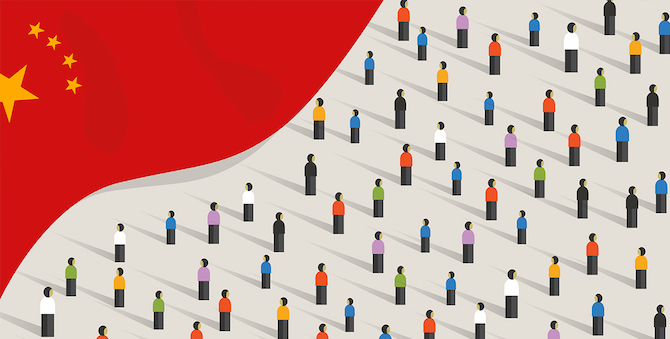Beijing and Shanghai – one the national capital, while other the financial capital of China – have witnessed a decline in their populations. Even Hong Kong, a leading international finance centre, is fast losing its people. These cities appear to be following the national trend, which sees a fall in the birth rate while the proportion of the ageing population grows. China is still the world’s most populated country, and the availability of cheap labour played a crucial role in its economic progress so far. Thus, the worsening demographics are likely to hurt China, which is already under stress due to Covid-led slowdowns, in a long term.
For the first time in two decades the population in Beijing decreased by 84,000 in a year to 21.84 million in 2022, while the death rate has increased to 5.72 deaths per 1,000 people and the birth rate has fallen to 6.67. (1) Shanghai, which was the most affected city during the Covid pandemic, has witnessed a decline in population by 135,400 people to 24.76 million. (2) The population of Hong Kong shrank for the third time in a row. In 2022, its population fell by one per cent. Interestingly, 62,100 deaths outweighed 29,000 births in 2022 in Hong Kong. (3)
China recorded a population decline for the first time since the 1960s. China’s population planning initiative One Child Policy forced families to have just one child, something that is backfiring now, also because couples do not want to raise more than one child. (4) Many even are trying to stay single or without a child. (5) The negative population growth was expected due to rising living costs and difficulties in raising families, uncertainties in employment, said Xiujian Peng, Senior Research Fellow at the Centre of Policy Studies. (6)
Chinese feminist activist Lü Pin said China’s younger generation does not find giving birth as inevitability. “They no longer feel bound by traditions of raising children”, she said. Surveys find that Chinese youths have given priority to careers and they do not see marriage as a prerequisite for sexual behaviour, which is adding to China’s baby woes. (8) Chinese President Xi Jinping’s Zero-Covid policy, which was criticized heavily in China, is another major reason for women to delay or give up having babies. China’s National Health Commission accepted that strict control over peoples’ lives has had an impact on people’s desire to have children. “The coronavirus has also had a clear impact on the marriage and childbirth arrangements of some people”, the commission said. (9)
Media professional Claire Jiang found resonance with a social media trend with the hashtag “we are the last generation” which was created to protest against Chinese authorities threatening to a person’s family for three generations for non-compliance with Covid rules. “I definitely don’t want my children to have to carry the uncertainty of living in a country where the government can just come to your door and do whatever they want”, Jiang said. (10)
While the birth rate is dropping, the population of elderly people is increasing. China is set to become an ageing society by 2035 when 400 million old people would constitute 30 per cent of the country’s total population. (11) In the business hub of Shanghai, elderly people accounted for 18.7 per cent of its population, which is quite above the national average of 14.9 per cent. (12) It is 20.18 per cent in Beijing and 20.5 per cent in Hong Kong. (13, 14).
This is adding great pressure on health services and the pension system, crippling investments, infrastructure building and overall economic growth. Louise Loo, a senior economist with Oxford Economics, said that “population ageing is not unique to China but the strain on China’s pension system is a lot more acute”. While the government’s efforts to boost the birth rate proving futile, China now stares at an inevitable demographic crisis. “It can be predicted that China’s birth rate will continue to shrink for more than a century”, said Huang Wenzheng, a Beijing-based demography expert. (15)

